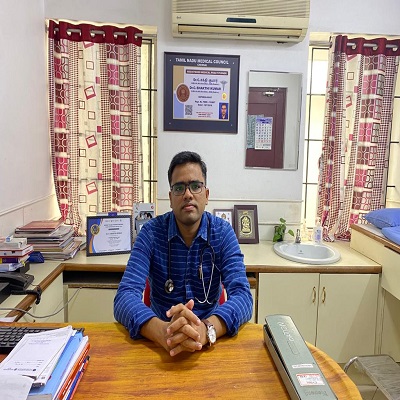Liver Transplantation
Lotus’s Advanced Liver Disease and Transplantation Centre
What is Liver Transplantation?
A liver transplant is a complex surgical procedure that replaces a liver that no longer functions properly (liver failure) with a healthy liver from a deceased donor or a portion of a healthy liver from a living donor.
Types of Liver Transplantation
Living donor liver transplantation
Living donor liver transplantation is the most common form of liver transplantation in the country and the East. A fit and healthy close relative who is voluntarily willing to donate a part of their liver is chosen for this procedure.
Advantages of Living Donor Liver Transplantation
The transplanted organ immediately works and regrows to an adequate size in a few months
Reduced waiting time and eliminates the uncertainty of waiting for a cadaveric liver graft. The patient can be transplanted at the earliest as per their health condition.
Faster recovery of patients, given that they are better prepared. The quality of the liver graft is also better than a cadaveric liver graft which is recovered from a dying patient.
Deceased donor liver transplantation
Deceased donor liver transplantation (also known as cadaver liver transplantation) involves transplanting a healthy liver from a person who has died in the ICU owing to irreversible brain injury. The cause of death is usually head injury sustained in a road traffic accident or a fall from height.

Note :A patient is considered for liver transplantation only if it improves their chance of survival/quality of life. It is important to note that the patient should be fit enough to survive the operation. All patients must undergo an assessment before a decision is made regarding liver transplantation.
Who requires a liver transplant?
A liver transplant is considered when a patient has reached the state of end-stage liver failure. Failure of the liver can happen suddenly, either due to an infection or due to particular medications or from a long-term medical problem. Liver failure is known to occur due to the following reasons:
- Alcoholism
- Alpha – 1 Antitrypsin deficiency (a typical accumulation of antitrypsin protein in the liver causing cirrhosis)
- Biliary Atresia – malformation of the bile ducts
- Chronic Hepatitis with Cirrhosis
- Hemochromatosis – an inherited disorder that overwhelms the body with abnormal levels of iron deposits
- Liver Cancer
- Primary Biliary Cirrhosis – an unusual condition where the immune system attacks and annihilates the bile ducts which results in failure of the liver
- Sclerosing Cholangitis – the insider and outside of the bile ducts get scarred and become narrow, which causes the bile to back-up, ultimately leading to failure of the liver
- Wilson’s disease – a very rare inherited disease that causes abnormal levels of copper deposition throughout the body, causing liver failure
Eligibility Criteria for a Liver Transplant
Overview
Specialists from different medical disciplines will evaluate and determine whether a liver transplant is needed. They will review the medical history. If the candidate is determined to be an active liver transplant patient, their name will be placed on the waiting list, until a live or deceased donor becomes available and whose liver can be matched. Order of priority for liver transplant is determined on the scores of MELD (Model of end-stage liver disease) and PELD (Pediatric end-stage liver disease).
The Lotus Advantage

Our transplant team is one of the most experienced in performing and managing liver transplants, having trained extensively in the best centres across the world. It is one of the few centres in the country where deceased donor, living donor liver transplantation and comprehensive treatment for gastrointestinal, hepatobiliary and pancreatic diseases are all offered under one roof.
- Dedicated state of the art LICU(Liver ICU) setup for critical and postoperative care
- 24×7 dedicated liver helpline: Ph: 0424-2 28 28 28
Email: [email protected] - A specialised team comprising transplant surgeons, hepatobiliary surgeons, intensivists, surgical gastroenterologists.
Book an Appointment
Understanding Paediatric Liver Transplant
Liver transplantation is very successful in treating children with end-stage liver disease and enables a long healthy life. Organ scarcity is the main limitation to the full exploitation of transplantation, and it is being overcome thanks to innovative surgical techniques. Children of all ages, even the youngest, today have the chance of being transplanted, with almost no waiting list mortality. Split-liver and living-donor transplantation have contributed to reversing a situation in which, during the 1980s and 90s, children had higher waiting list mortality compared to that of adult patients.
Several years ago, the main focus of care of children with end-stage liver disease was to find a liver transplant, but today, the main interest is in long-term follow-up, with prevention of immunosuppression-related complications and promotion of as normal growth as possible. The history of pediatric liver transplantation has clearly shown that success is dependent on strict and integrated collaboration between referring pediatricians, pediatric transplant hepatologists, transplant surgeons, nurses, transplant coordinators, psychologists and social workers.

FAQs of Liver Transplant
The transplant operation usually takes 8-10 hours. Firstly, the affected liver is removed by dividing the blood supply. The new liver graft is then replaced and new connections are made between the blood vessels and the new liver graft. The bile duct of the liver is also joined with the patient’s bile duct. The wound is then closed after placement of one or two drains, to drain excess fluid that usually forms after surgery.
Rejection: Up to 30% of all transplant patients develop signs of rejection in the first year after transplantation. Rejection is completely treatable in over 90% of cases with these measures. Occasionally, stronger medications may be required to treat persistent rejection.
Infection: Susceptibility to infections is higher due to the anti-rejection medications. The early post-liver-transplant period poses high-risk and gradually decreases after the first 6 months. We advise patients to maintain good hygiene, avoid uncooked food, and refrain from coming in close contact with persons with active infection.
Tumours: Transplanted patients have a slightly increased risk of tumours. This is related to the intensity of immune-suppression used in them. Skin tumours are the most common type of tumours occurring in the transplant population and are also completely curable if identified and treated early enough
The average duration of stay in the hospital is about 2-3 weeks. By the time the patient is discharged, they will able to eat normally, walk comfortably and will need minimal analgesic medication. During the stay, the patient will be guided to take the necessary medications.

